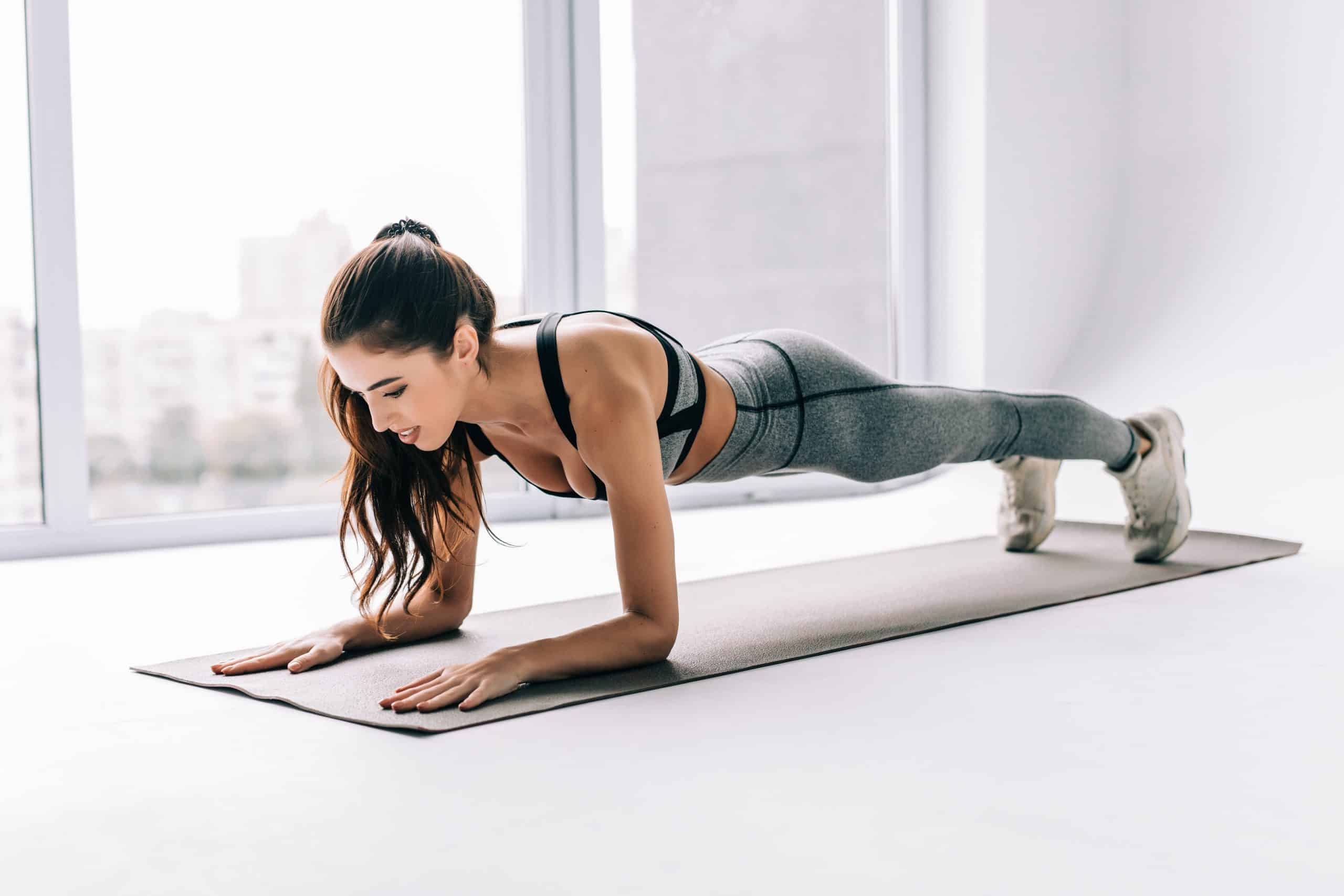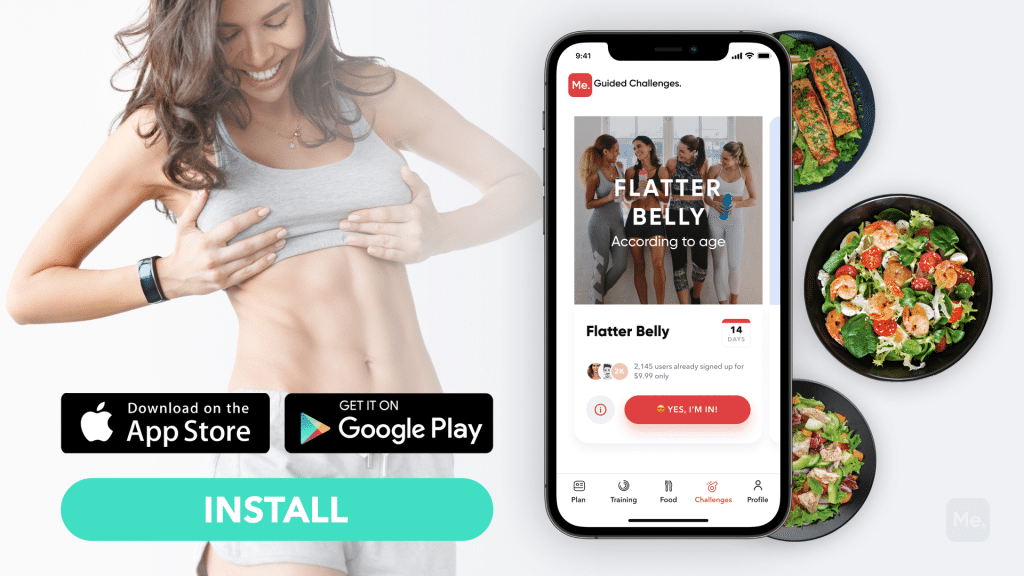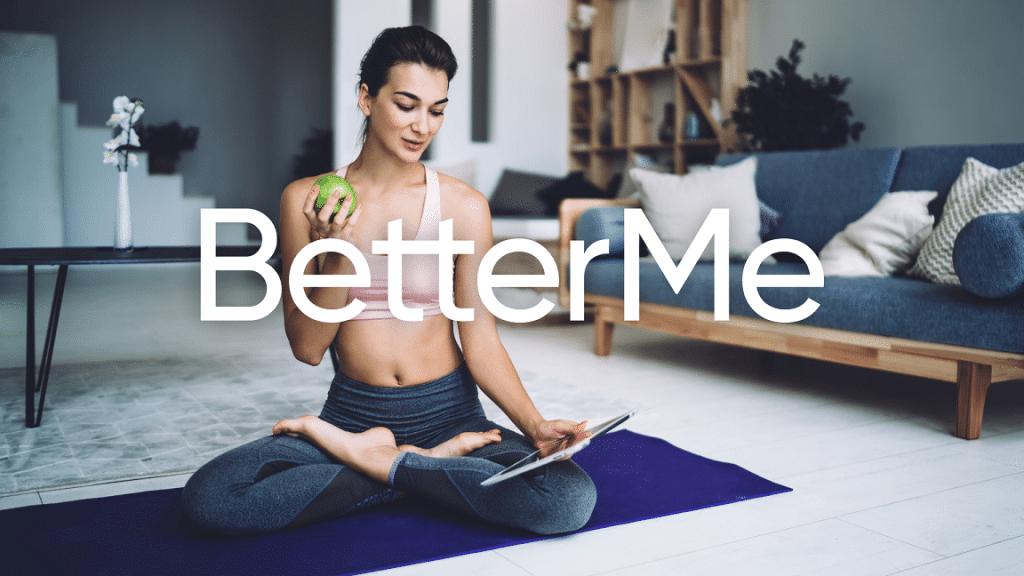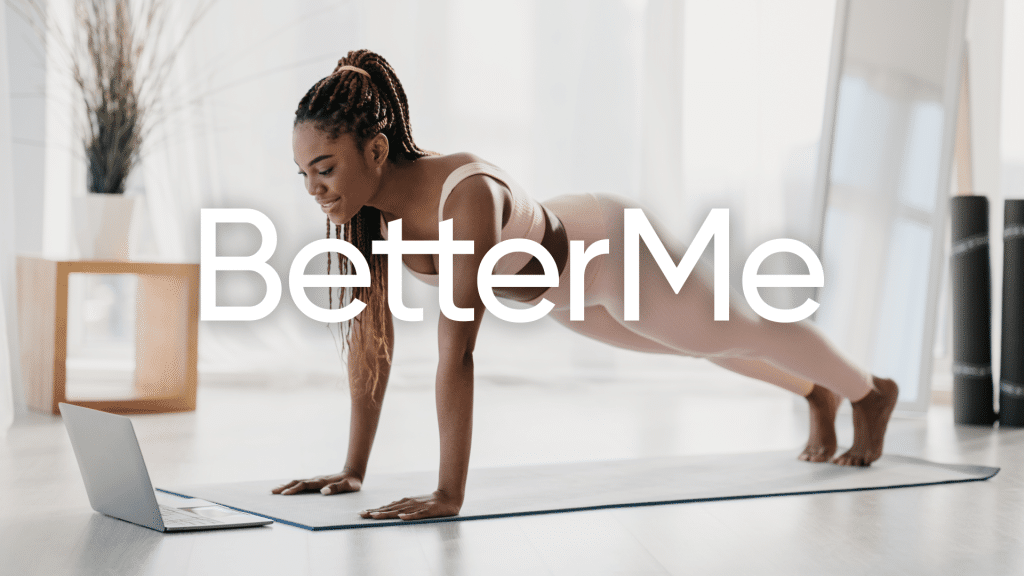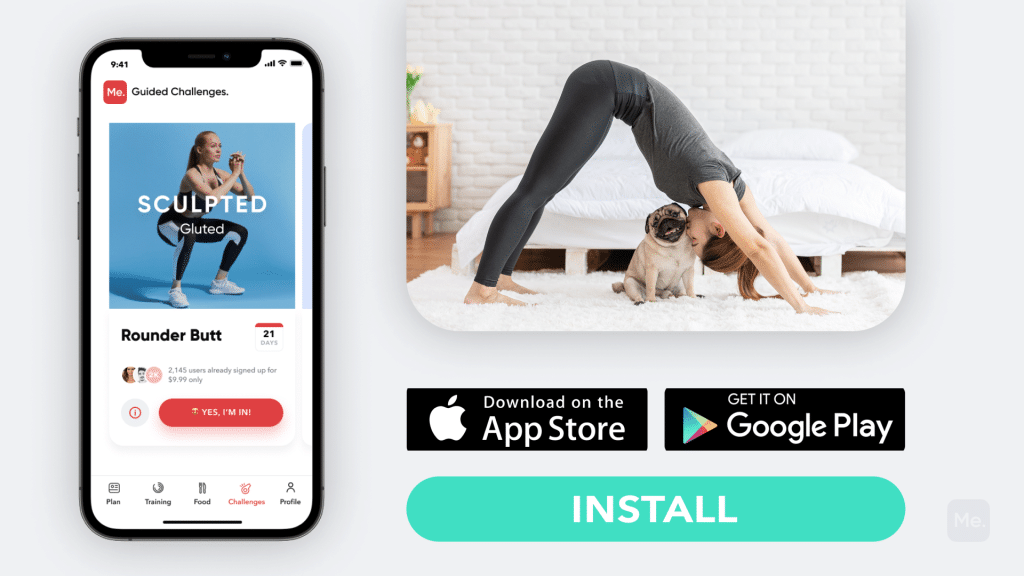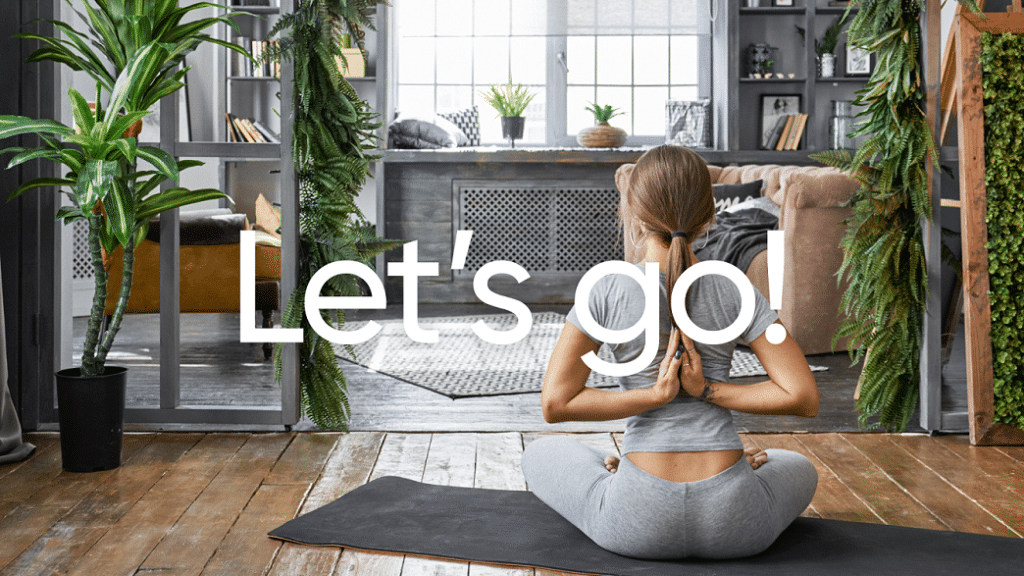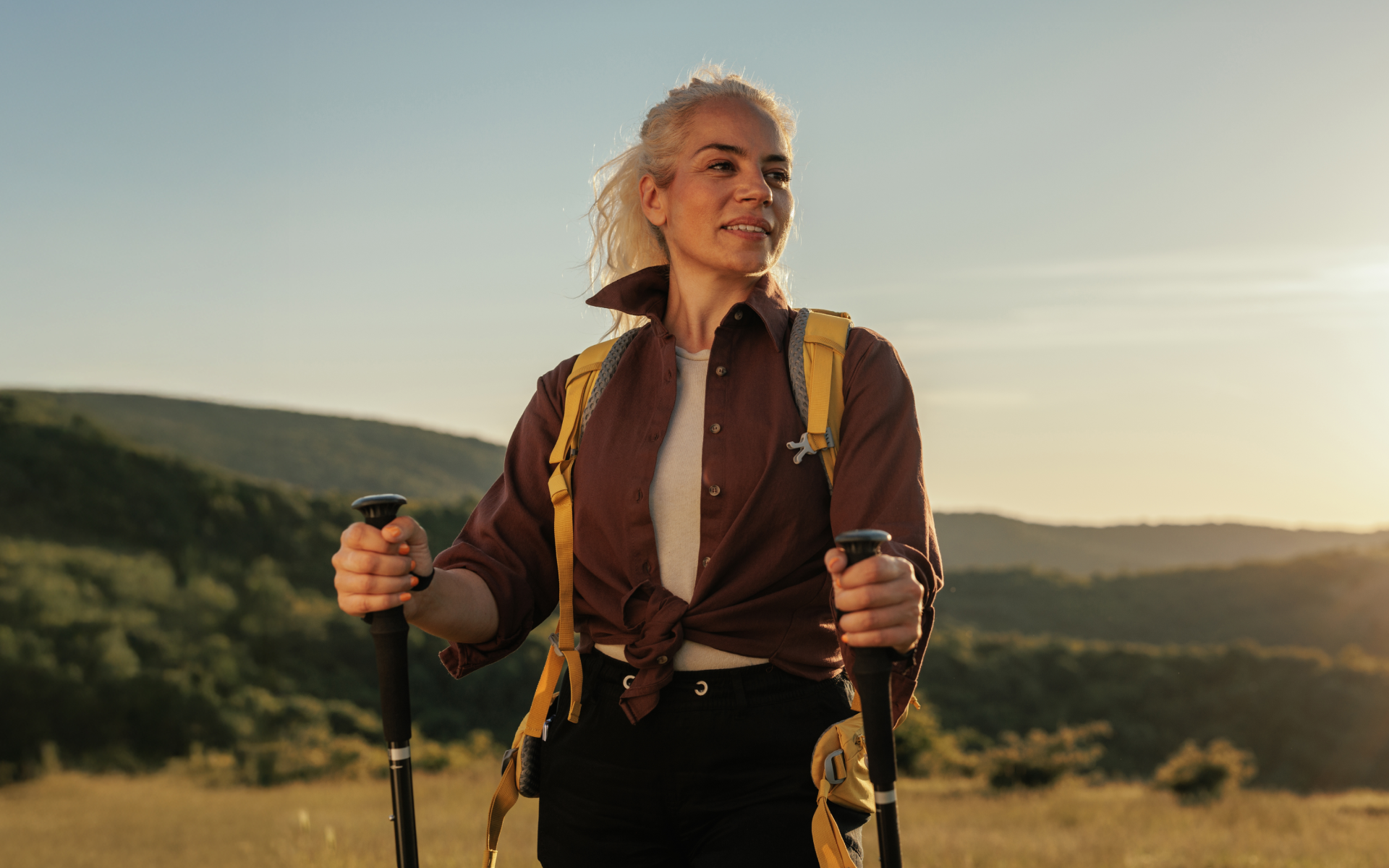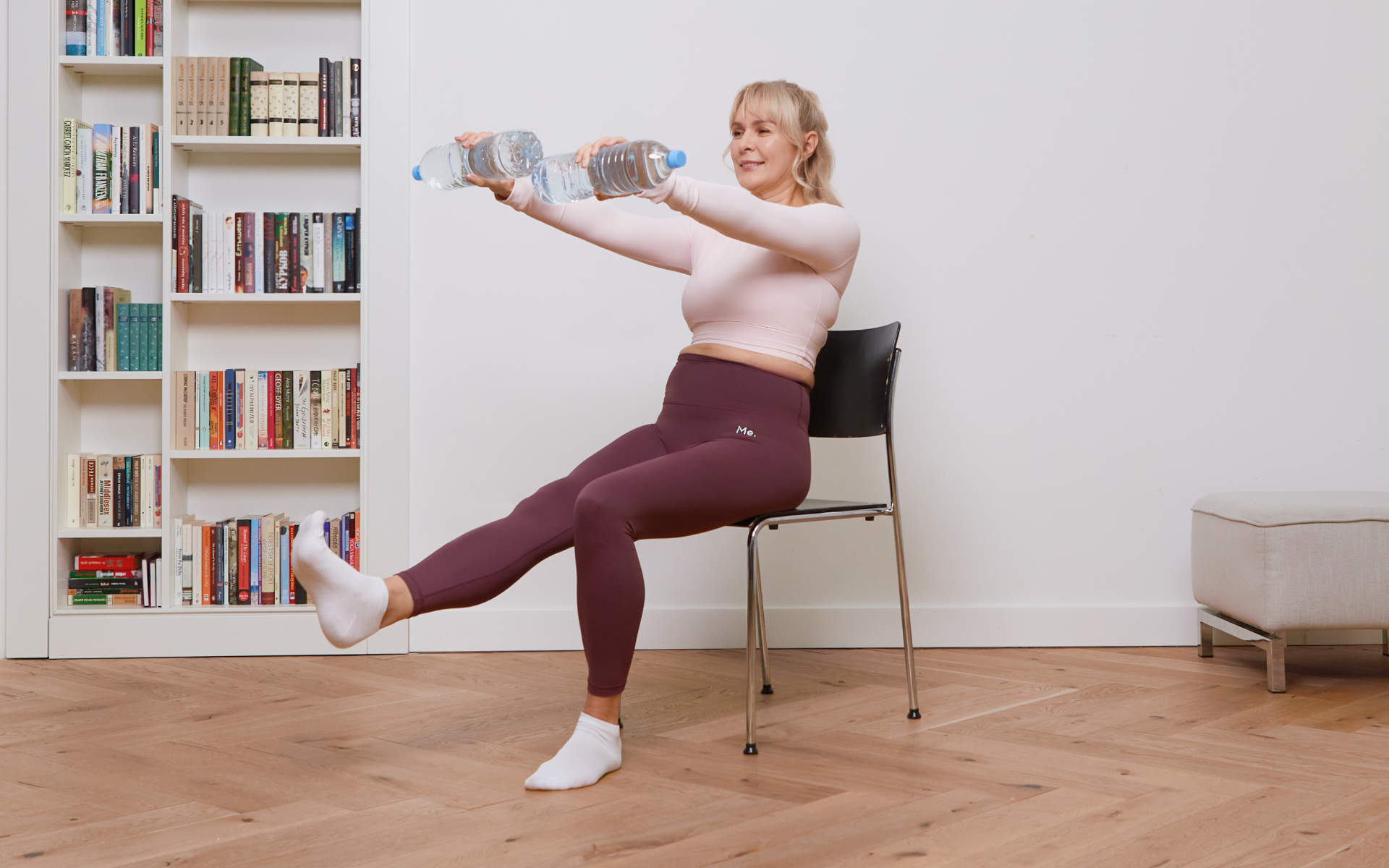Can a 30-day plank challenge change your life? Might sound like a clickbait claim, but it all depends on your dedication. There are so many misleading facts about the plank: that it’s boring, only targets abs, isn’t intense enough, and is a filler in-between the high-intensity sessions, etc.
Get your personalized
meal plan!
In reality, though, the plank is one of the most wholesome, effective exercises. It targets your whole core, all of its muscles, and more. Shoulders, arms, legs, glutes – your whole body is incorporated into not letting you sag or fall onto the floor under the influence of gravity that seems so heavy when you’re only a foot or so from the ground.
If you do it wrong or try to stay in one position for an hour, the plank won’t bring you benefits. It will only contribute to back pain and severe muscle soreness the next day.
That being said, if you do it properly, engaging all your body, a 30-day plank challenge may actually change your life, helping you to start your fitness journey. I’m here to provide you with the knowledge about the right technique, plank benefits, answers to the most common questions, and offer effective exercises.
What’s A Plank?
A plank is a bodyweight exercise you can do to make your core muscles, upper body, and other muscles stronger. It’s quite challenging, as you have to remain in a straight horizontal or almost parallel to the floor for a certain amount of time.
The worldwide record as of 2022 is 9 hours, 30 minutes and 1 second. And, while planks are considered one of the most effective bodyweight exercises, you don’t have to spend hours in this position.
The exercise engages:
- Core muscles
- Abs
- Obliques (both internal and external)
- Upper back
- Lower back
- Glutes
- Chest muscles
- Shoulders
More are incorporated as you do modifications of the regular plank.
Read More: Side Plank Muscles Worked: Is This Exercise Worth It?
Why Do The Plank 30-Day Challenge
You can do it as a start of your fitness journey. It’s not too overwhelming but there are many variations, enough to diversify your routine. Such a challenge will also help you instill a new habit of exercising daily, as well as train your discipline.
Not to mention that it won’t take a long time. During the first few days, you can stay only 30 seconds in the plank, doing two reps if you find it doable without strain.
Another reason is that you will progress gradually, therefore avoiding putting too much strain on your body. So, it’s a quick, effective, and beneficial way to improve your body composition and strengthen the muscles. This leads to the question “Why not?” rather than “Why do it?”.
Benefits Of A 30-Day Plank Challenge
A plank is a diverse exercise that has benefits on all sides of it. From pain reduction to weight loss, here’s what you can get by engaging in a 30-day plank challenge:
Stronger Muscles
Planks activate all core muscles, as well as hips, back, shoulders, etc. Actually, if you want better abs, definitely go for a plank. Many people ask “Do planks flatten your stomach?” online. While a flat stomach has a lot to do with your diet, lymph flow, and other factors, a plank can help you strengthen the abdominal muscles much better than usual crunches, due to the activation of the distal trunk muscle.
Back Pain Reduction
Forget the myths that exercising makes your back ache. It’s true only if you do it using the wrong technique. By doing core stabilization exercises properly, you can reduce your back pain, a 2017 study says.
A 30-day plank challenge can not only strengthen your muscles but can also help you get rid of the annoying back pain.
Better Balance
A stable core should make your daily life easier as it improves balance. Simple movements like picking something up from the ground or balancing on one leg when trying not to step into a puddle can actually make you fall and injure yourself. To avoid that, you can do balance training and engage your core, which is perfectly done through a plank and other exercises.
Better Endurance
Endurance is crucial if you want to have a successful fitness journey. And planks can help you build it to perform better at the gym or during home workouts later. Simply increase the time you do a plank every day by 10 seconds, and in a month, you’ll be able to do several sets of 1-2-minute planks easily. Afterward, you’ll be able to do cardio and strength training for longer, improving your looks and health!
Weight Loss
If you adopt mindful or intuitive eating, you can even lose weight by doing a 30-day plank challenge. The workout will make you spend more calories, which may create a mind caloric deficit needed for weight loss. Besides, your muscles will become more toned, which will change your body composition, making you look fit.
If you’ve mustered up the courage to crush your weight loss goal, let Betterme take the sting out of this demanding process. Our app will help you restructure your habits, remold your life and crank up your fitness results!
Posture Improvement
All the muscles that planks help you strengthen can influence your posture in a good way. A strong muscle corset of abs, core, back muscles, etc. can help you remain upright with a good posture, no matter if you’re standing, walking, or sitting. This is especially important for office-workers.
Easy Modification
There are so many types of planks, you can never get bored with them! 15-second or 30-second regular ones, on your hands, on your elbows, side planks, etc. can all become essential in your daily training routine.
So, is the 30-day plank challenge effective? If you plank right, then sure! You can experience all the benefits of this effective exercise, but only if you hold good form and diversify the movements to engage more muscles.
The Right Technique
To make sure you get all the benefits of the plank, you have to do it right. Would be great to have a mirror nearby or someone supervising your first attempts to do the exercise before you can self-balance.
Here are the elements of a perfect plank:
- Flat back
- Engaged core and glutes
- Butt in level with the back
- Neutral head position
As a result, you should feel the tension in your body; it should be difficult to stay like this for even 10 seconds. Don’t try to aim for the longest time because you’ll just adopt the wrong technique and waste your effort. Go for the right position and the feeling of each muscle in your body.
Here’s a step-by-step to remember:
- Get into a position for push ups.
- Place your hands under your shoulders.
- Squeeze shoulder blades.
- Engage your glutes and quads.
- If you want a more difficult plank, stay on your forearms and make sure they are right below the shoulders.
- Maintain flat back.
- Stay like this for the whole duration and don’t let the body sag.
If you’re looking for a plank challenge for beginners, try the modified plank first. It’s important not to strain your body too much and progress gradually. Do everything with respect and love to your body, and it will reward you with the best results.
To do the modified plank, simply start with your knees on the ground, just like you do for a modified push up. This will help your upper body get used to the load, preparing you for a more hardcore training in the days to come.
Read More: Bear Plank Chest Press: The Ultimate Workout To Tone Your Chest
Common Plank Mistakes: The Don’ts
There are so many people starting the plank challenge without preparation, only feeling the pain in their backs intensify the next day. Of course, it’s easy to make mistakes, especially if you’re a beginner. Here are some don’t you have to remember to get desired results from your plank challenge:
- Don’t aim for the time, aim for the form. It’s better to stay in the right position for 10 seconds than make it easier and stand for 2 minutes on the first try, ending up with sore muscles and lower back pain.
- Don’t sag your lower back to avoid creating extra tension on this injury-prone part of the body.
- Don’t drop your glutes and hips, always control the form.
- Don’t stick the butt out. This may be a good tip for better Instagram pictures but not for plank training. Maintain one line with the back.
- Don’t forget to engage your glutes. Squeeze them while you plank to create more support and relieve lower back pain.
- Don’t perform exercises if you feel acute pain anywhere in the body. If you feel severe discomfort, stop the challenge and go to your physiotherapist or another specialist, depending on the issues you have.
- DIversify your routine to avoid making it boring. There are enough modifications: easy, hard, cardio, and other types.
Keep safe and only do what feels right. Yes, it’s called a “challenge”, but don’t make your body go through pain. You’ll end up injuring yourself or making the relationships with your body worse, which may result in sabotage and you not wanting to exercise ever again.
Only love, respect, and doable workout loads will make your body respond positively, showing you quick results in endurance, balance, mobility, and mirror reflection.
Reasons why BetterMe is a safe bet: a wide range of calorie-blasting workouts, finger-licking recipes, 24/7 support, challenges that’ll keep you on your best game, and that just scratches the surface! Start using our app and watch the magic happen.
TOP-10 Plank Exercises To Incorporate Into Your Plank Challenge
What happens if you plank for 1 minute every day? You’ll tone your core, glutes, and other muscles. But a regular plank may be too difficult for you at the moment or too easy. That’s why, simply staying in a plank may bring limited results and be kind of boring in the long run.
Gladly, there are plank variations you can try within your 30-day plank challenge:
- Forearm to full – start on your forearms, check the position, and make sure your back is straight and in line with the glutes and hips. Transition to a regular full plank by lifting yourself arm by arm. As you’re in the full plank, descend to the forearm plank one arm after another. Make sure to switch arms you use first to lift up and go back down. Start with 10-15 seconds and aim for 30 seconds. By the end of the challenge, you may be able to do 2-3 30-second sets.
- Side plank – do this to target your obliques more and potentially help with scoliosis. Lie on the side and make sure your legs are almost straight. Control the position with your elbow right below the shoulder. You can keep the other arm to the side or put it up in the air for a more advanced exercise. Then, lift your torso from the ground and try to achieve a straight line with your body. 15-20 seconds should be enough before you switch sides.
- Shoulder taps – get into the full plank and control your form. You can put your legs wider for better balance. Then, take one hand off the ground and tap the opposite shoulder with it. Repeat on the other side. Do it for 15-20 seconds first, aiming for 30 as you continue to challenge yourself a week or so after.
- Arm reaches – the same scenario as in shoulder taps. You get into a full plank and reach one arm after another in front of you. The timing is also 15-20 seconds at first. If it’s hard for you to hold form, do it slowly, feeling every movement. Try to remain as stable as you can, without leaning too much to the sides.
- Walking plank – it will be more difficult to maintain the right form and you will need more space for this exercise. Get into a plank and start moving the right hand and leg to the right. Have the left side join and “walk” like this back and forth for 15-20 seconds. Aim for 30 seconds as you progress with the plank challenge.
- Reverse plank – here’s a plot twist to diversify your challenge. Try reverse plank by sitting on the floor with extended legs, putting your hands behind you on the mat, and lifting yourself up, engaging your core, glutes, hips, and back. Make sure the fingers are directed to your feet, not away from you. The exercise will also help you stretch the chest muscles that can get quite tired from the regular plank.
- Mountain climber plank – start in a full plank and move your leg to the opposite elbow, maintaining proper form. Put the leg back and repeat on the other side. The timing is standard, 15-20 seconds if you’re a beginner. You can then prolong the reps to 30 seconds and do 2-3 reps, but make sure you don’t strain your muscles too much.
- Fast mountain climber – the harder version will have you move your legs much faster. It’s rough cardio for a beginner, so take it easy. When you want to finish your workout with something extra spicy, this is definitely it. Make sure you hold the right form and don’t feel severe discomfort.
- Spiderman plank – start with the full plank and bring your knee to the elbow on the same side, directing the leg outside. Put the leg back and repeat on the other side. 15-20 seconds, aim for 30, or you can count reps, then aim for 15-20 on each side as you progress with your plank challenge.
- Plank jacks – start with a full or forearm plank (the latter is harder to perform). Put your feet close to each other and jump them into a wide position. Then come back and repeat. 15-20 seconds will already have you burning. As you get stronger, try to do it for 30 seconds.
Remember that these are variations and you don’t have to do all of the exercises in one workout. Professionals can do it and they still feel tired after such a workout. As you finish the challenge, you can incorporate several types of planks into your day-to-day routine, but don’t do them all at once, especially if you’re a beginner.
You should start from a regular plank on your hands or even the modified version. Please, build the tension gradually, don’t make yourself endure a 30-minute plank training with side variations, arm extensions, and so on. It will be easier for you to engage in such a workout after this 30-day challenge or even more, and only if you feel ready for it.
If you’re a complete beginner, living a life with little to no physical activity, start with 10-15 seconds of modified plank. Spend the first couple of days building the right form, and only go for another rep if you’re ready. Then, proceed to trying a regular plank and spend 10-15 seconds there; then 20-30 seconds, and only when you feel confident, try variations of planks I described in this section.
Good luck!
Summary
Stop asking “What happens if you do a plank everyday for a month?”
Just do it!
You can start from an easy modified plank and progress slowly yet steadily, increasing the intensity and duration of your exercises. Plank training has so many benefits! It’s suitable for both men and women, helps you train many muscle groups, the main one being the core.
A strong core helps you avoid injury and maintain posture, leading to less back pain and more mobility. Not to mention that such physical activity will increase the number of calories you’re going to spend, which aids weight loss.
There are many 30-day plank challenges, depending on the physical condition of the trainee. You can create your own by adding the modified plank phase and moving slowly to the regular plank and more difficult exercises.
Every day, you’ll feel like it’s easier to maintain proper form when performing the exercise. And your body will be grateful, cheering you with a better, more controlled posture, less pain, and better physical condition!
DISCLAIMER:
This article is intended for general informational purposes only and does not serve to address individual circumstances. It is not a substitute for professional advice or help and should not be relied on for making any kind of decision-making. Any action taken as a direct or indirect result of the information in this article is entirely at your own risk and is your sole responsibility.
BetterMe, its content staff, and its medical advisors accept no responsibility for inaccuracies, errors, misstatements, inconsistencies, or omissions and specifically disclaim any liability, loss or risk, personal, professional or otherwise, which may be incurred as a consequence, directly or indirectly, of the use and/or application of any content.
You should always seek the advice of your physician or other qualified health provider with any questions you may have regarding a medical condition or your specific situation. Never disregard professional medical advice or delay seeking it because of BetterMe content. If you suspect or think you may have a medical emergency, call your doctor.
SOURCES:
- 15 Plank Variations You Haven’t Tried but Need to ASAP (n.d., healthline,com)
- Core Stability Training for Injury Prevention (2013, ncbi.nlm.nih.gov)
- Effectiveness of core stabilization exercises and routine exercise therapy in management of pain in chronic non-specific low back pain: A randomized controlled clinical (2017, ncbi.nlm.nih.gov)
- Integration core exercises elicit greater muscle activation than isolation exercises (2013, pubmed.ncbi.nlm.nih.gov)
- Serial Case Reporting Yoga for Idiopathic and Degenerative Scoliosis (2014, journals.sagepub.com)
